Story & images by Jason Bruno

The 1926 Donald Ross Classic – Sara Bay Country Club in Sarasota, Florida is a bit of an unknown to many golf enthusiasts and casual lovers of Ross architecture. However, to keen Ross aficionados, especially those in the southeastern United States, it is on the shortlist of his finest works in the Sunshine State (along with Seminole, Timaquana, Belleair and Gulfstream). Earlier this year we spent a day with Sara Bay’s resident Club Historian – Gary Cole, who was our host, and he passed along some comprehensive knowledge about the club’s “golden age” origins and it’s nearly 100 year evolution.
Club History
Founded under the original name of Whitfield Estates Country Club, the club was the epicenter of affluent social events in the city of Sarasota. Founded in 1924 by L.B. Whitfield of Atlanta, the original site plan was to be an 18 hole golf course, hotel, housing development, yachting complex. Less than a year later, famed architect Donald Ross was hired on to design the 18 hole course. Donald Ross, Bobby Jones, Walter Hatcher (a Ross associate) and E.H. Price (of Whitfield Estates) walked the property and chose the present site for the routing of the course. Believe it or not, Bobby Jones himself was brought in (by Adair Realty) to help sell homes as the Assistant Sales Manager of Real Estate at Whitfield Estates.
During our visit to the club, Cole went on to describe the famous match that took place on February 28, 1926, shortly after the club’s opening – the match put the world’s best amateur, Bobby Jones versus the best professional, Walter Hagen. Jones recalls in his autobiography that it was the worst “drubbing” he suffered in his career, but went on to say he regarded “Whitfield Estates course as one of the best in America.” Bobby Jones and Tommy Armour, the club’s first head golf professional, also participated in a series of 7 match play events with fellow golf professionals, four of which were played at Whitfield Estates Country Club. Jones and Armour went undefeated, 7-0, in those matches.

The Great Depression changed things for the club. In 1938, Whitfield was renamed North Shore Country Club. Just two years later, North Shore Country Club was renamed Sarasota Bay Country Club. In 1940 and 1941 the course, along with Bobby Jones Municipal, was the site of the Senior PGA Championships won by Otto Hackbarth and Jackie Burke, Sr. (who now owns Champions Golf Club in Houston, Texas). In the early 50’s, the club hosted the LPGA Sarasota Open, where legends like Babe Zaharias, Patty Berg, Marlene Streit, Louise Suggs, and Betsy Rawls all played. The club became Sara Bay Country Club in 1964, and continues to host several prestigious events.
Present Day
In 2018, noted Ross specialist – architect Kris Spence used the original blueprints to restore the bunkers and greens at Sara Bay, recapturing the vision Donald Ross brought to the club during the “Golden Age” of golf design. Today, the newly restored layout is both subtle and bold in a way that resembles and plays with Ross authenticity. The design challenges accomplished players, while offering a thought provoking and interesting walk back in time – a historical golf experience if you will.
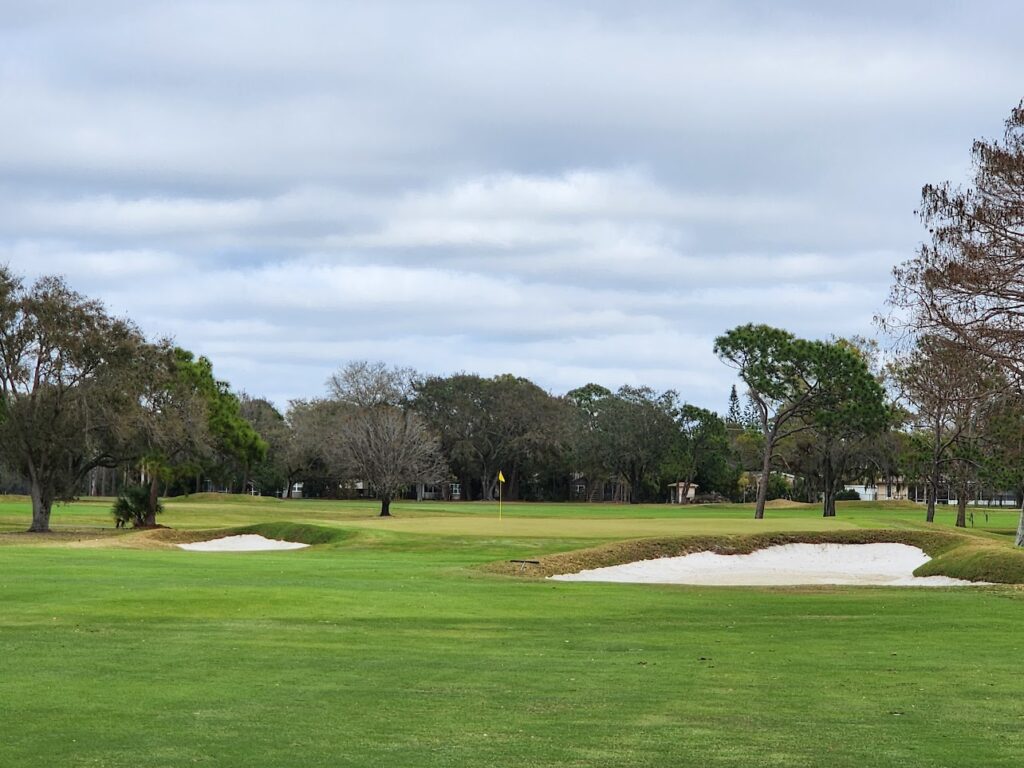
The principles guiding the Spence restoration are evident in Mr. Ross’s books about his design philosophy:
- Give players options to play the hole
- Provide a way to play the hole for both better players and players of lesser ability
- Ensure a diversity and variety of challenges on the greens
- Present fairways that zig-zag, rather than appear to be straight.
- Create a mental test and an eye test that makes players think
This past summer, re-grassing of the fairways, tees, and approach areas was completed with Bimini Bermuda sprigs – grow-in was led by Superintendent Carlyle Merring. To read our Q&A with Merring – click here. *images in this feature pre-date the re-grassing project (summer of ’23), but we also included some updated images recentl y sent over by Merring (scroll down to the bottom).
Although there is water on a handful of holes at Sara Bay, it really is more a functional drainage component than a strategic feature on most holes. However, the par 3 fourth (above) and par 4 fifth (below) are two holes where the hazard must either be carried or navigated around.

The relatively short fifth is a tricky sidewinder that twists right to left off the tee, and left to right on the approach. Liquid trouble bisects the two fairways, and then runs along the entire right side of the approach. The right side of the fairway offers more forgiveness, but doesn’t leave the best angle as seen in the photo above. A stand of mature Live Oaks and Slash Pines guard any thoughts of a left side bail out. Birdies can be had, but big numbers lurk everywhere.

The approach view at the par 5 seventh (above). The cross bunker pictured provides a deceptive image to those with ambitions of reaching in two, from 200+ yards out, it appears that it guards the front of the green for those attempting to reach in two . . . but it’s actually 80 yards or so short of the putting surface. For the more conservative strategy, the left side of the fairway opens up the ideal angle to this boldly contoured green that features a prominent false front. It’s here towards the middle of the round that you begin to really see some of the more distinct Ross green complexes.

The par 3 eighth includes another creek that runs diagonally in front of the green complex – a feature commonly found in Ross’ native Scotland, the “burn” adds an element of anxiety for the recreational player, even on a shorty such as this. Without the carry the hole seems pedestrian, but add in a few vivid contours on the shortgrass and you have a devilish little challenge . . .
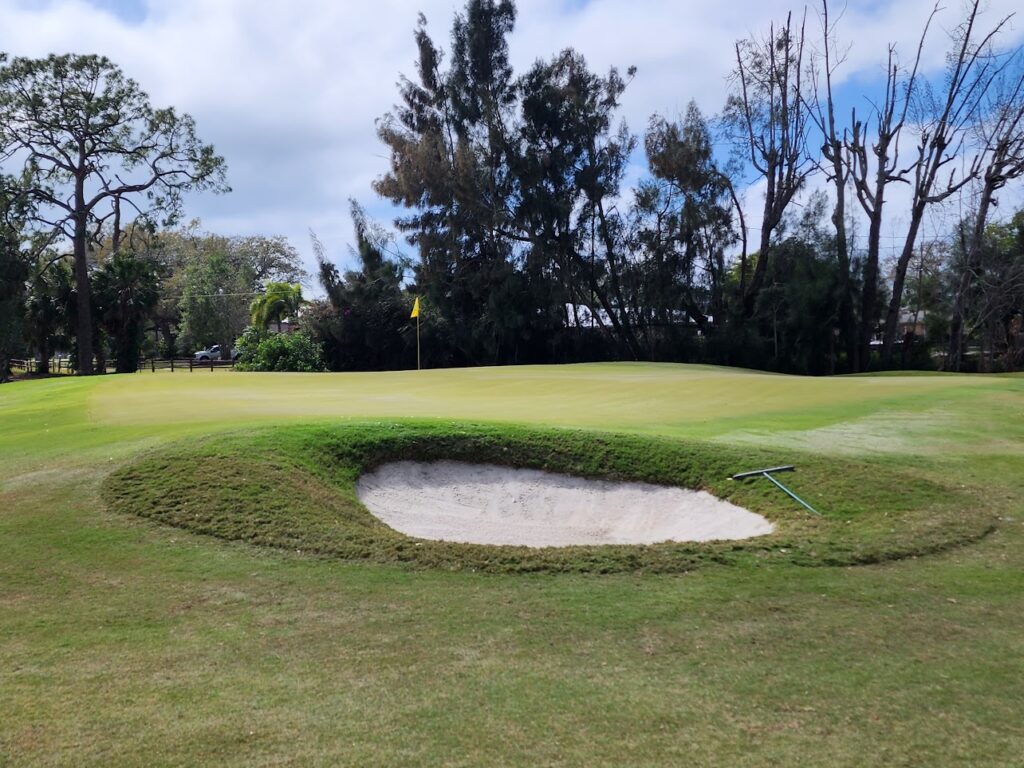
A closer view from greenside at the eighth shows a robust kicker slope on right-center portion of the green, while a plateau on the far right makes for a tough “Sunday” hole location. Short left finds the pot bunker, and anything pin high left – falls away steeply from the green to a tightly mowed into the grain recovery situation that settles well below the grade of the putting surface.
The par five ninth takes you back towards the clubhouse, carry this large fairway bunker on the left and you’ll face a decision whether to give it go in two . . .

The fairway steeply falls off about 30 yards short left of the green into a flat shallow bunker that features a 7ft tall Bermuda grass wall – making for a more than challenging shortgame opportunity.

The clubhouse occupies the highest point on the property (probably 30 feet of elevation), it’s not dramatic, but does provide a rare downhill tee shot at the first and tenth. This seemingly innocent diagonal centerline bunker on the tenth creates just enough of a nuisance to foster indecision.
Thirteen is a demanding long par 3 without any subtle riddles tossed in, those riddles – another visually distracting diagonal creek that’s not in play, along with the tees that aim you down the right tree line, make this one-shotter a tougher than expected par…
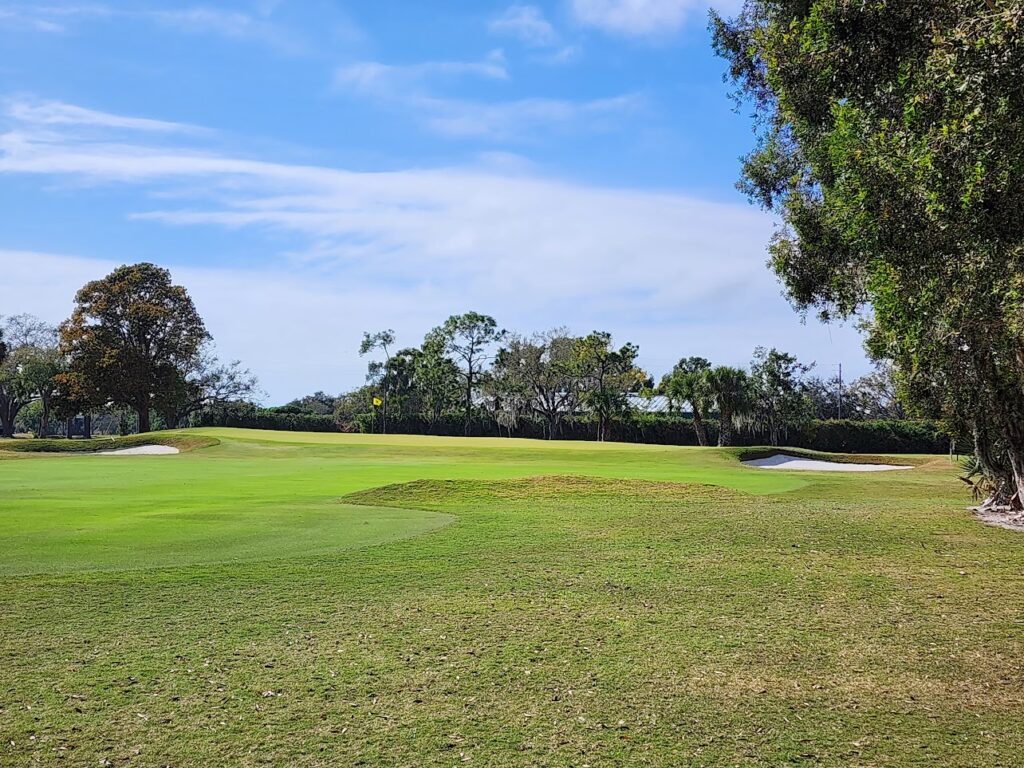
A closer look at thirteen, as Donald Ross intended, there’s plenty of room to run shots onto the greens at Sara Bay.
The short fourteenth appears to be an approach into someone’s living room, similar to the par 3 tenth at Winged Foot, but in reality, the residence is a decent distance from the green complex.
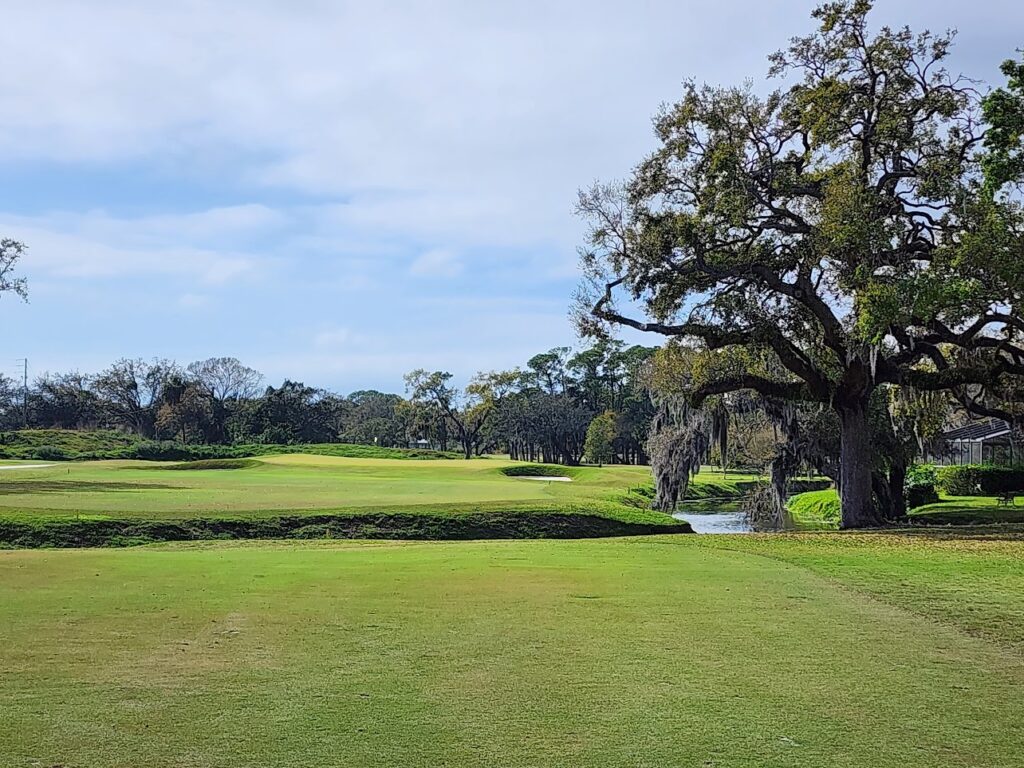
Fifteen is a stunner with the majestic Live Oak on the right, and is another where water bisects the line of play diagonally and then runs parallel to the fairway on the right.
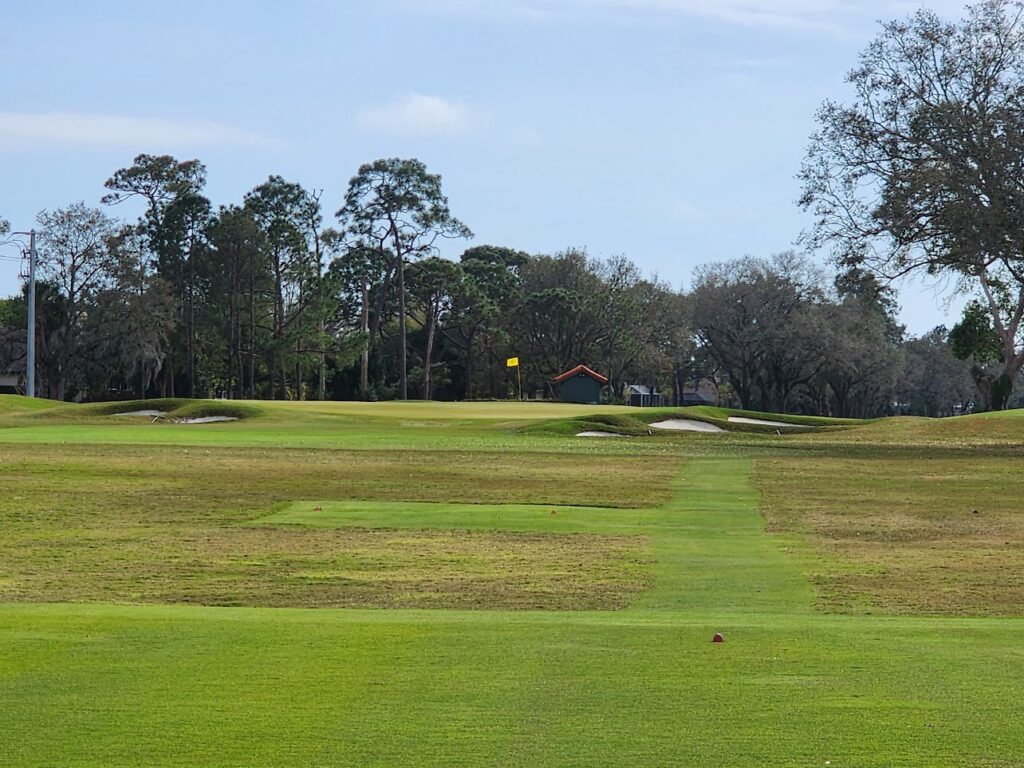
Sixteen is a semi-lengthy par 3, this one features an elongated two-tiered green that tilts from back to front (a Donald Ross design staple that isn’t as prevalent at Sara Bay as it is at other Ross classics like Timuquana, French Lick or Seminole).

The dogleg right par 5 home hole features another slim waterway, but this one fronts the green complex – making it a strategic difference maker at the finish. For those opting for the conservative route, the third here challenges your ability to be precise with short iron play, This green complex provides one of the boldest contours at Sara Bay, and there’s as much ground movement along the surrounds as there is on the putting surface – note the fall off in front, the tilt of the bunker, and the hollow off to the right. Brilliant design.
The Annual Nassau Challenge between Atlanta Athletic Club and Sara Bay awards the “The Bobby Jones Belt” to the victors.
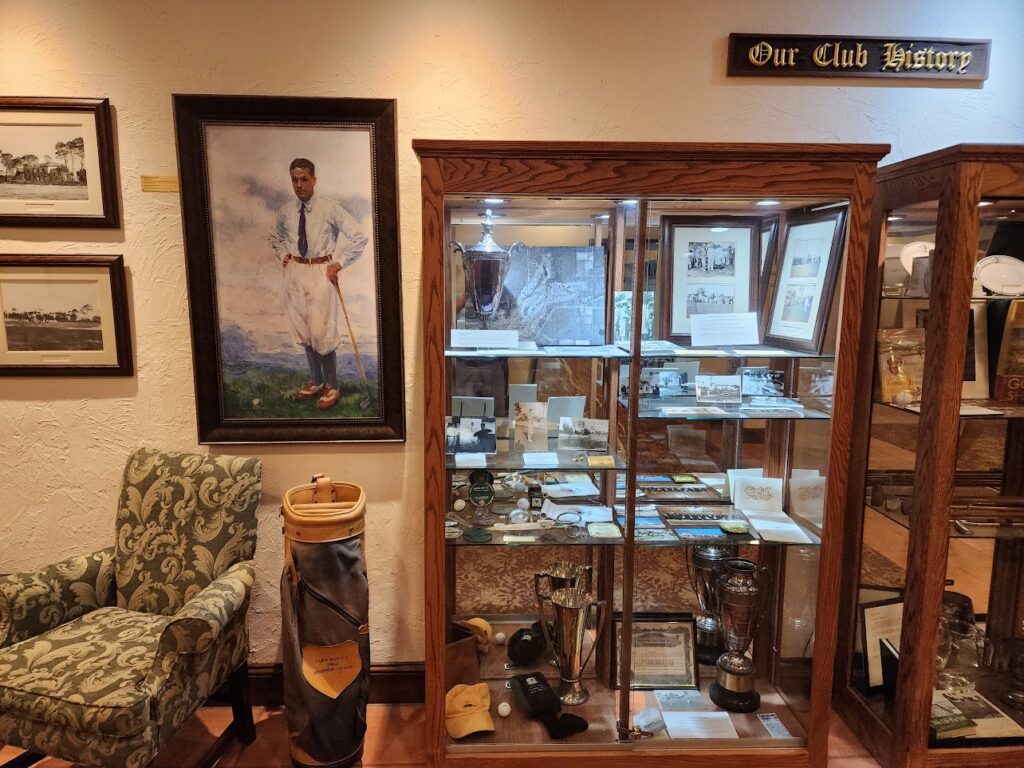
Just a few of the historical artifacts from the club’s history.
Here’s a few select images of Sara Bay after the summer re-grassing project was complete (Bimini Berrmuda).
The experience at Sara Bay is sublime, the ideal combination golden age architecture, history/legends of the game, “Old Florida” style, traditional but not ultra-formal – a very welcoming and friendly spirit permeates throughout. Kris Spence has crafted a worthy restoration of Ross’ work, bringing to life his original intent . . . a thought provoking design that will thrill the recreational golfer and challenge the more skilled player. Big thanks to club historian Gary Cole for the gracious time spent making me feel at home at the club, and to Superintendent Carlyle Merring for allowing us into his world – to learn about the agronomic operations and practices he and his staff perform each and every day at Sara Bay.
To learn more about Sara Bay: https://www.sarabaycc.org/
